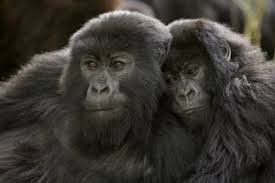Mountain gorillas are mostly found in Uganda and it harbours half of these wonderful primates, they are found in Bwindi Impenetrable National Park, these primates have attracted many gorilla trekking safaris to Uganda, and that’s why conserving these primate is needed so that they can continue to exist in order to in order to promote tourism in Uganda.
 The mountain gorillas can be conserved by
encouraging proper management of the national park where these primates live, the
forest should be fertile and rich in biodiversity. This is because these
mountain gorillas need to feed well in order to have their lives health. This
will help to conserve these mountain gorillas and at last this will help in
increasing mountain gorilla tracking in Uganda.
The mountain gorillas can be conserved by
encouraging proper management of the national park where these primates live, the
forest should be fertile and rich in biodiversity. This is because these
mountain gorillas need to feed well in order to have their lives health. This
will help to conserve these mountain gorillas and at last this will help in
increasing mountain gorilla tracking in Uganda.
Working with partners will also
help to conserve the endangered primates, since efforts will be initiated by
the organisations involved , They will put Laws and regulations in place so
that both the fauna and flora can be preserved in order to promote more gorilla trekking expeditions in Bwindi Impenetrable National Park.
The mountain gorillas can be conserved and
preserved by equipping the stuff management who take care of these gorillas.
The park staff, wardens, game rangers should be equipped with the technology
they might need when monitoring the park and this will help to protect the
animals from any threat, hence increasing mountain gorilla tours in Uganda.
Working with the local people will
help in benefiting the gorillas and the community as well; the management of
the park should be in position to inform the local community about the
importance of conserving and preserving the mountain gorillas so that they can
also share some of the benefits from the mountain gorilla safaris that are
carried out in Uganda.



